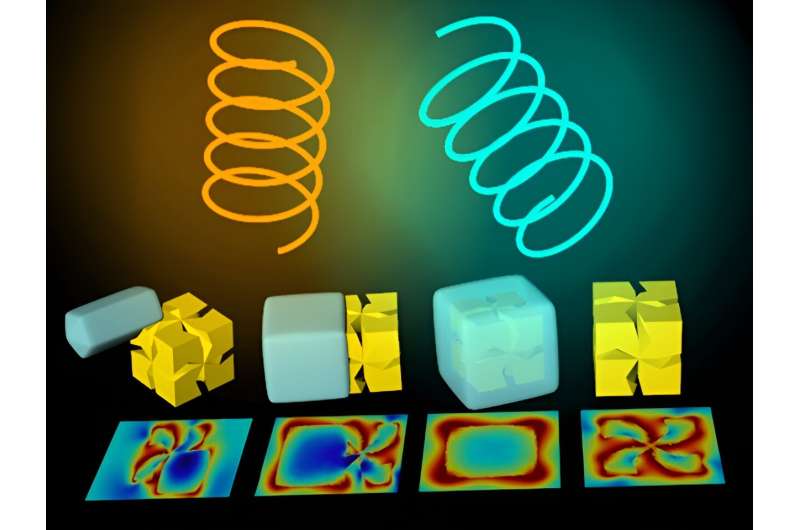This article has been reviewed according to Science X's editorial process and policies. Editors have highlighted the following attributes while ensuring the content's credibility:
fact-checked
trusted source
proofread
Chiral AuCu heterostructures with site-specific geometric control and tailored plasmonic chirality

Artificially-engineered chiral materials with exceptional light-manipulating capabilities show significantly-enhanced chiroptical response and capability of light manipulation, which have emerged as a promising chiral platform for applications in biosensing, catalysis, and photonics.
Rational design and construction of chiral-achiral hybrid structures are of great importance to realize the multifunctional complex chiral structures toward emerging technological applications. However, significant challenges remain due to the lack of fine control over the heterostructure.
To address the above challenges, Prof. Qingfeng Zhang's group from the College of Chemistry and Molecular Sciences at Wuhan University developed a general bottom-up synthetic strategy for the site-selective growth of Cu nanodomains on intrinsically chiral Au nanocrystals. This work was recently published in Science China Chemistry, titled "Chiral AuCu Heterostructures with Site-Specific Geometric Control and Tailored Plasmonic Chirality".
Interestingly, the team found that fine-tuning the concentrations and competition of surfactants enables the overgrowth of Cu nanodomains onto chiral Au nanoparticles in a site-specific manner achievable. The geometry-dependent optical and circular dichroism (CD) properties of chiral AuCu heterostructures were also experimentally and theoretically proved.
The site-specific geometric control of chiral heterostructures can be further simply extended to 2D and 1D chiral structures. By taking advantage of the galvanic replacement reactions, chiral heterostructures with increasing architectural complexity and compositional diversity were further achieved.
More importantly, it is envisioned that chiral AuCu heterostructures that integrate excellent plasmonic chirality with superior catalytical activities could potentially have promising applications in spin-polarized dependent and asymmetric nanocatalysis. Also, the controlled site-selective chiral growth may be extended to other metals and inorganic materials and represents a promising strategy to construct complex chiral hybrid nanostructures with multi-functionality.
More information: Guizeng Yang et al, Chiral AuCu heterostructures with site-specific geometric control and tailored plasmonic chirality, Science China Chemistry (2023). DOI: 10.1007/s11426-023-1685-3
Provided by Science China Press





















